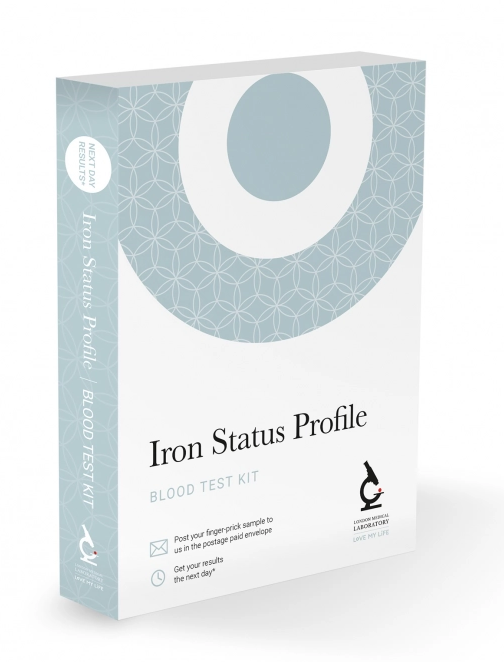Call our Services booking no: 07471952847

Iron Status Profile
£69.00
What can I expect from this Iron Status Profile?
Iron is an essential component of the body which makes up red blood cells to transport oxygen all around the body.
Low iron can cause anaemia, a common issue causing a list of problems starting with fatigue, weakness and coldness which can then progress to more serious conditions.
We also test for how well the body can absorb iron which may be reduced in conditions affecting the liver.
Identifying conditions of this test

Iron Studies (5 Biomarkers)
Iron studies are a set of blood tests used to measure the amount of iron carried in the blood and stored in the bodies tissues. Iron deficiency can be the cause of a wide range of symptoms such as fatigue, chest pains and a shortness of breath.
Iron
Iron is a mineral which is needed for making red blood cells, which transports oxygen in the blood, and is important for healthy muscles, bone marrow and organ function. Iron is measured to show the amount of iron in the blood. Low levels of iron can indicate anaemia whereas high levels can indicate liver disease.
Total Iron Binding Capacity
Total Iron Binding Concentration (TIBC) is the maximum amount of iron that can be transported in the blood. Iron is used for the transportation of oxygen in the blood. TIBC tests are used to determine iron status and its absorption. This can be used to help diagnose Anaemia and iron overload conditions such as Haemochromatosis. Your TIBC will be impaired if you also have existing liver disease.
Unsaturated Iron Binding Capacity
Unsaturated Iron Binding Concentration (UIBC) is the amount of transferrin that is reserved for the iron transportation. Iron is used for the transportation of oxygen in the blood. UIBC tests are used to monitor treatment for iron toxicity.
Ferritin
Ferritin is a blood protein that is used to store iron. Iron is used for the transportation of oxygen in the blood. It is measured to understand how much iron the body stores. Ferritin test are used to diagnose anaemia and liver disease.
Transferrin Saturation
Transferrin is an iron-binding glycoprotein that is produced by the liver. It is used to transport iron which transports oxygen in the blood. Transferrin tests are used to determine iron status and can be used to diagnose anaemia. Transferrin saturation is the value of serum iron divided by the total iron-binding capacity of the available transferrin.
How it works
Whether you use a home test or have your sample taken with one of our trained phlebotomists, our blood tests are quick and easy to use.
FAQs
How long does it take to balance iron levels after a test?
It may take up to 6 months to restore iron levels if they are below the normal range - depending on your results. Therefore, regular testing is encouraged to monitor your progress.
What happens if my iron levels are too low?
If your iron levels are below the normal range then you may be at risk of being considered anaemic. Symptoms of anaemia include tiredness, difficulty concentrating and a decrease in hair and nail quality.
What happens if my iron levels are too high?
Excess iron is known to be stored in major organs including the heart, liver and endocrine glands. This can either be caused by excess iron supplementation/intake, liver disease or a specific medical condition.
What is iron for and what does the Iron Status Profile include?
Iron is a critical part of haemoglobin - a protein in your blood that helps carry oxygen from your lungs to the rest of your body. Our Iron Status Profile measures your iron levels, iron stores and indicates inflammation levels.
Call our Services booking no: 07471952847
Cowley
Greater London (Hillingdon)
UB8 2EP